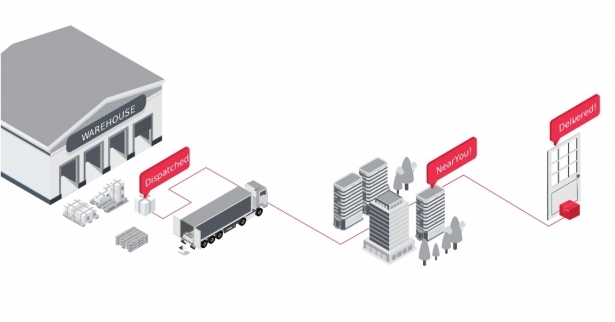70% of e-commerce sales coming from Tier 3 & 4 cities: ClickPost report
September 25, 2020: Based on the 8 million+ shipment data available with its e-commerce clients and delivery partners like Ekart and Increff, the logistics intelligence platform, ClickPost, has released a report detailing the changes that have occurred at the e-commerce businesses' end to maintain supply chain in the post-Covid-19 era.

September 25, 2020: Based on the 8 million+ shipment data available with its e-commerce clients and delivery partners like Ekart and Increff, the logistics intelligence platform, ClickPost, has released a report detailing the changes that have occurred at the e-commerce businesses' end to maintain supply chain in the post-Covid-19 era.
ClickPost is an integrated logistics platform with more than 100 logistics partners integrated via a single REST API. Its plug and play SaaS platform puts intelligence in every delivery and has enabled its clients including Nykaa, Realme and Pharmeasy reduce RTO rates, prevent delays, cut down logistics and customer care costs and provide best after purchase experience.
Tier 3 & 4
The report notes that 70 percent of e-commerce sales now come from Tier 3 & 4 cities as consumers from these cities are spending more time online on social media, video platforms and e-commerce with internet penetration has in the country increasing to 700-800 million users.
Advantages of online retail
Lacking touch and feel is a disadvantage but online retail helps to target the right customer at the right time, capture appropriate signals along the customer purchase journey and have the ability to display the complete warehouse, which is not possible in a store where offerings will be limited.
Reducing logistics cost
Ensuring unit economics is challenging as there are three main factors that impact unit economic sales namely categories, customer acquisition cost and logistics.
Showcasing the full depth of inventory is a challenge for stores due to limited storage space:
• Real-time inventory exposure across stores is important to achieve unit economics.
• If a customer order can be allocated to the store nearest to the customer’s location it will help reduce shipping cost, improve TAT and increase customer satisfaction.
• Rejections are usually higher in stores due to limited SKUs this can be solved with proper IT infrastructure that ensures real-time inventory updates.
Using technology
Technology adds value to logistics as the seller can from anywhere and buyers can buy from anywhere. To ensure a smooth experience ensure the stores must provide real-time inventory update, allocate right orders to right shipping partners at the right cost and promote promote online payments more and reduce COD.
Challenges in delivering goods
New augmented delivery partners e.g Uber with Ekart, or similar partnerships with transport companies or autos etc. can be useful but asking customers to pick from the hub or store is not ideal as finding the hub becomes a problem. Menawhile, companies are also trying to look at crowdsourcing models for delivery but background verification is a challenge.
Challenges in returning products
Cost of processing returns has increased due to the need for re-sanitizing items and keeping them under quarantine for 14 days. If the return period is 30 days, getting the item in and keeping it under quarantine will take approx 2 months.
The product can go out of fashion and demand. This adds strain on the warehouse and retailer. It takes longer to bring items back from tier 3 and 4 cities, proper QC should be done at the time of order picking to mitigate losses.
Ensuring smooth user experience
• It is very essential to have the right content; product details, its usability and correct imagery.
• Using available customer data in the right way is very important.
• Options for live chat, and video chats to address customer query.
• Augmented reality and magic mirrors are enhancements that require deep technological advancements but can be a possibility in the near future.
• Augmented reality, putting proper size charts, giving right recommendations etc can help reduce the rate of returns.
• Prediction of the estimated date of delivery is important, especially during Covid-19
• Providing better delivery time to customers, keeping customers informed is essential.
• Keeping a track of possible disruptions is important.
• All information should be captured and then an ETA should be provided to the customer.



